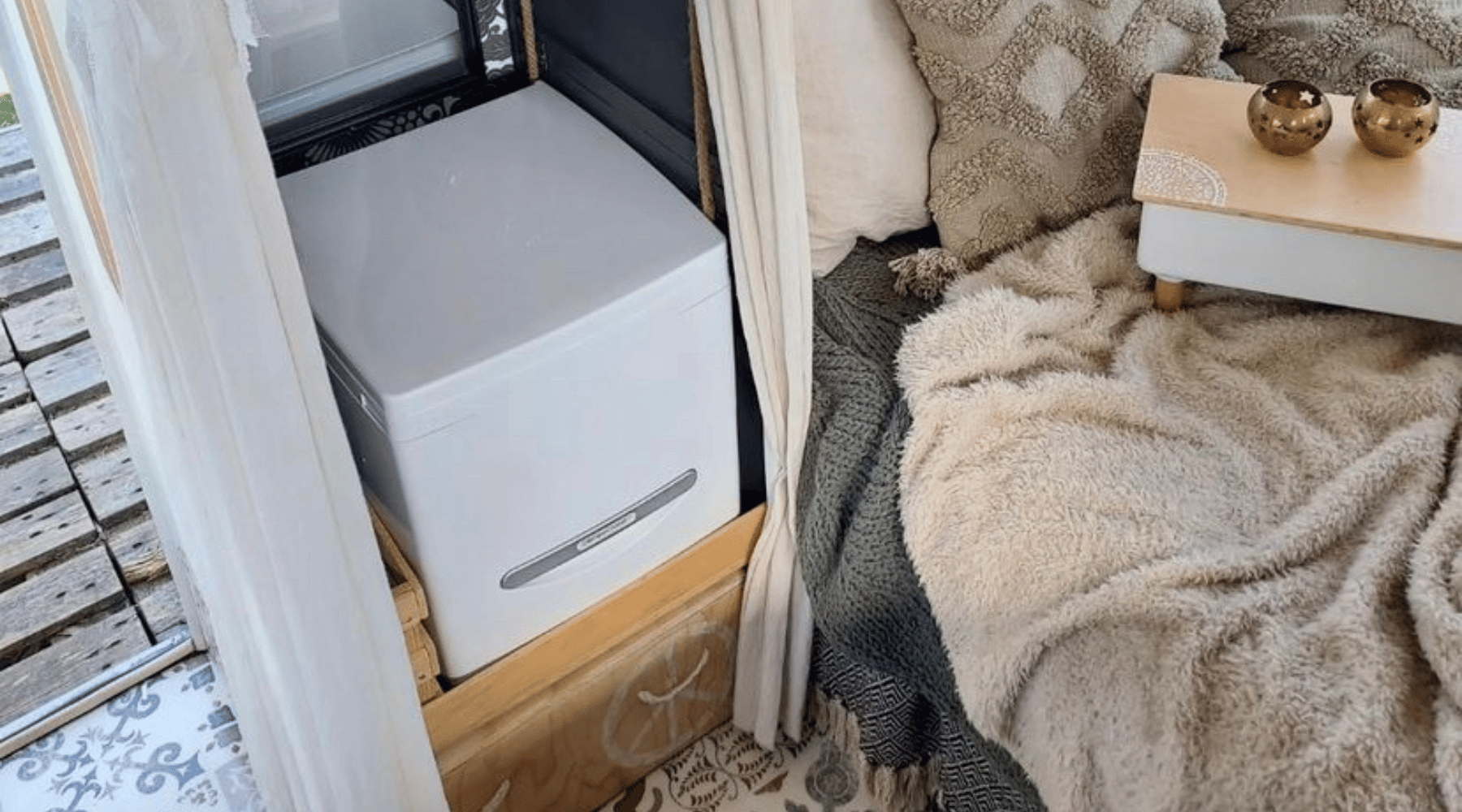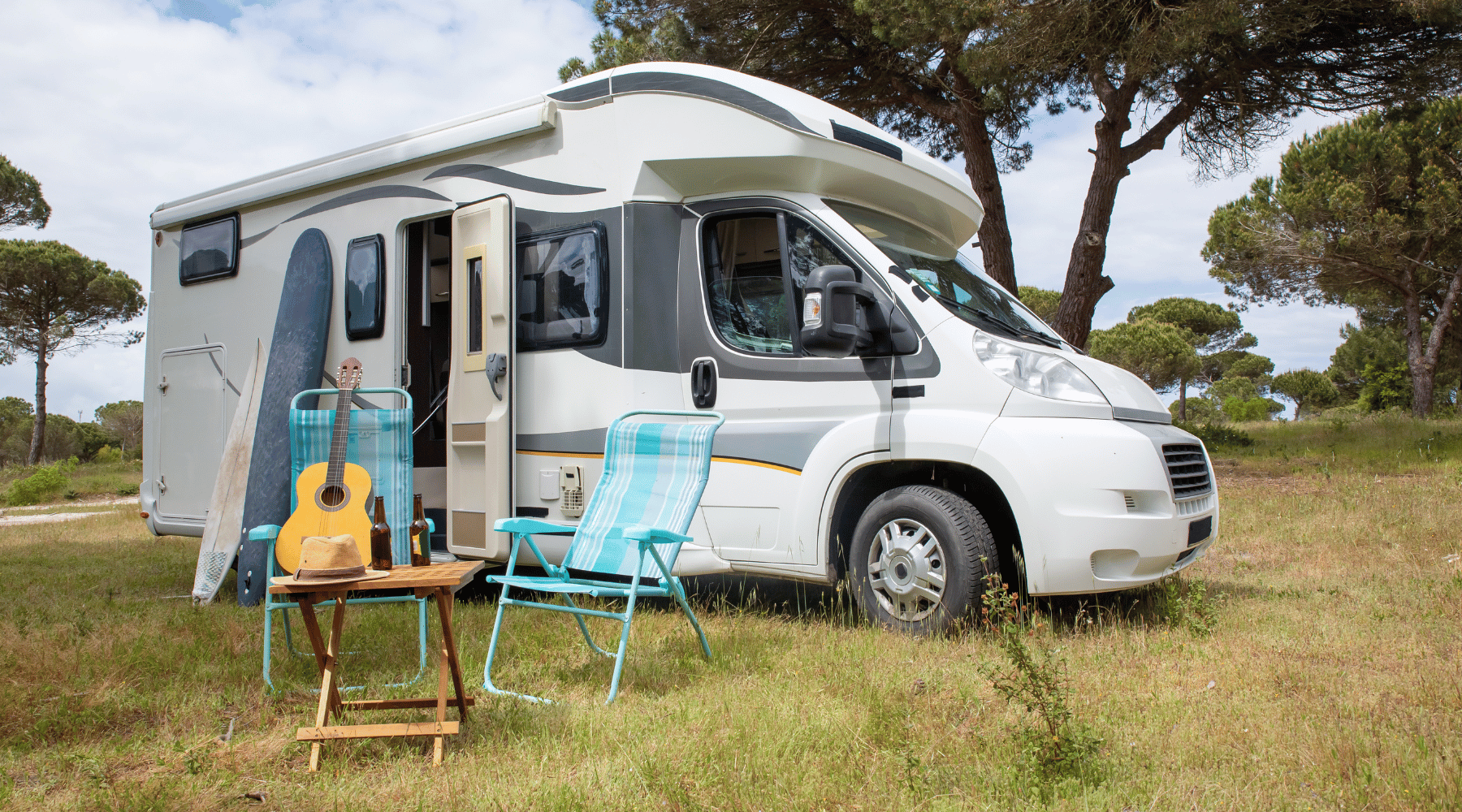Compost Toilets for RVs Pros and Cons: What’s the Right Choice for You

Composting toilets are all the rave right now, with travelers looking for more sustainable ways to manage human waste while on the road. But can you put a composting toilet in an RV? In short, yes! There are a variety of compost toilets for RVs on the market, and choosing one that's right for you can feel a little overwhelming - but it doesn't have to.
We had all these questions ourselves as we designed Cuddy because we wanted to ensure it checked all the boxes! Of course, the answers may differ depending on your specific needs, so we'll try to share unbiased answers, pros, and cons about using an eco-friendly composting toilet based on the most common questions we personally had and that we receive now.
Compost toilets for RVs: What are they?
What do RV compost toilets actually do? As its name indicates, a composting toilet helps to start the process of composting human waste instead of flushing it along with fresh water in a tank that needs resettling. This results in organic waste handling in a completely self contained environment, which begins the process of fertilizer creation.
It doesn't mean this toilet requires less maintenance, but it uses less water than its counterparts which helps towards environmental health over a longer period.
What is compost? And can you make it in your composting toilet?
The first burning question is simple: What even is compost?
Simply, compost is a nutrient-rich organic matter that results from decomposing organic waste, such as fruit or vegetable scraps, leaves, grass clippings, and other biodegradable materials, including solid waste.
This natural process is facilitated by microorganisms, bacteria, and fungi, breaking the organic waste into a valuable soil conditioner. As a fertilizer improves soil structure, enhances water retention, and provides essential nutrients for plant growth, serving as an environmentally friendly and sustainable way to recycle organic materials into a compost pile.
Composting human waste takes up to six months or more, so keep that in mind when using a composting toilet. In truth, the waste in your solids bin isn't yet compost when you empty it, so you must dispose of it properly in an approved waste receptacle. This is why we refer to the matter in your solids bin as "human waste" and not compost (because it's not!).
Here's a great article about backyard composting that goes into more detail about the full process.

The real pros and cons of an RV composting toilet
As popular as composting toilets for RVs are right now, there are some pros and cons to be aware of.
Why we love compost toilets for RVs
We might be biased, but we think composting toilets are pretty darn cool. Here are some of the best composting toilet facts that we get excited about!
- Eco-friendliness: The most obvious and sought-after reason people choose a composting toilet is that they are an eco-friendly toilet. They don't need chemicals to treat human waste and don't use any water like a traditional toilet does - so you save on your fresh water tank!
- No black tanks: You don't need a black tank with a composting toilet since all waste is contained in the toilet solids bin and urine separator. Although one great perk of the Cuddy is that with the external liquids drain kit, you can drain your liquid waste (urine) directly into your black or gray tank if you're installing your Cuddy permanently.
- No smell: That's right! A composting toilet should not smell since the liquid and solid waste are separated. Even a cassette toilet can start to emit a sewage smell, but with a composting toilet, the only smell you might notice is a rich, earthy smell, much like the forest in the Pacific Northwest!
- Saves space: Since you don't need a black tank with a composting toilet, and they don't need water to operate, you can save a significant amount of space in your RV. Many composting toilets like Cuddy and Cuddy Lite are also significantly smaller than regular toilets, not to mention portable!
Off-grid friendly: Since you don't need a significant power source to operate composting toilets, and they don't use water, they are perfect for off-grid use! No need for a dump station, and depending on how many people are using it, you'll only need to empty the solids bin of your Cuddy every 2-4 weeks.

Drawbacks of composting toilets for RVs
As with all great things, there are always a few challenges that might come up. These are the most common things we hear about when someone tries out a composting toilet for the first time. By following a few simple tips, you should be able to keep your composting toilet happy and in tip-top shape!
- Learning curve: Most composting toilets do come with a slight learning curve. Variables like how many people are using it, the weather conditions where you are located, and waste disposal options are all things that can be different for people depending on their specific circumstances.
- Moisture management: As the process starts working, the solid waste may start producing moisture. This has happened to us a time or two, and it means your toilet is working! But, excessive moisture can be troublesome. If you live somewhere very warm and humid, this might affect you more than others. Here's a guide to help you troubleshoot excess moisture.
- Possible fly management: We all know flies like poo. And it only takes one to make many more. Sometimes a fly might find its way into your solids bin and leave some presents... don't despair! You can sprinkle some diatomaceous earth in your solids bin to kill any flies and the "presents" they left you. We have also found that using coco coir instead of peat moss helps deter pests from sticking around.
- May need a power source: Although Cuddy is designed not to need a power source, we highly suggest wiring in the internal fan to help with airflow. This will help reduce moisture buildup and encourage the beginning processes of the composting process.
- Cost: "But going poo in the woods is free!" you might be thinking... well, yes, but there are many places that you simply can't dig a cathole, not to mention many National Parks and protected lands that don't allow catholes to be used for your poo. Having an RV composting toilet abides by Leave No Trace principles and gives you the freedom to poo wherever, whenever you need since you will be self-contained! If you consider the fees you will rack up by paying for dump stations and repairing your regular toilet system, the cost of a composting toilet will be a reasonable investment.
In our opinion, the pros far outweigh the cons when choosing a composting toilet system, but ultimately, that's for you to decide.

Most-asked questions about composting toilets for RVs
Now that you know the pros and cons of compost toilets for RVs, you probably have more questions about how composting toilets work in general. Let's have a look at some here.
Will I smell poo if I use a composting toilet?
Probably the biggest question we hear is "Do RV composting toilets smell?"
Due to how composting toilets work, you should only notice an earthy smell, much like the dirt outside in a very humid environment. If you do notice any odor that resembles poo, you probably just need to add some more organic matter to your solids bin, or it might be time to empty it completely.
How does a composting toilet work in an RV?
Compost toilets for RVs separate liquid (urine) and solid waste (poo). The solids go into a storage chamber with organic matter, such as coco coir, to help start the composting process, and the liquids go into a container with a liquid capacity of a gallon or more. Separating liquids from solid matter is the key to ensuring your composting toilet does not smell.
If your toilet has an agitator like the Cuddy, you rotate the agitator after each use to mix the solids with the organic matter to start the decomposition process. This helps break down the solids so your solids bin doesn't fill up as quickly.
If you use a composting toilet like the Cuddy Lite, which doesn't have an agitator, you typically add a little bit of organic matter to the bin after each "deposit." You will have to empty your waste bin more often, but the overall process remains the same, and you still won't have any odor!
When your solids bin is ready to be emptied, you simply put it in a biodegradable bag and dispose of it in an approved waste receptacle.
Typically, you can follow the same guidelines as disposing of baby diapers. Just remember that your solid waste is not yet fully composted, so it's technically still disposing of human waste.

Can I swap an RV toilet for a composting toilet?
In short, yes! Although it might be more difficult in some RV setups.
If your RV has a built-in cassette toilet, removal might be challenging. Since Cuddy is so small, some people opt to leave the hardware to their current system and simply put Cuddy into their bathroom space. Cuddy also fits right into the space that was designed for your portable chemical toilet, making it an easy replacement process.
How often do you empty a composting toilet for an RV?
This will depend on the solid capacity and liquid capacity of your ideal composting toilet. With Cuddy, you will empty your solids bin every 2-4 weeks and your liquids container every 1-2 days. Again, this is depending on how many people are using Cuddy.
Where do you empty composting toilets on the road?
The best thing to do before you travel or before you hit a new state is to check with the local authority. Each will have very specific rules for composting toilets, and where and how you dump your grey water and solids load will matter.
Do composting toilets need electricity?
No, BUT we recommend wiring in the small fan for Cuddy to help with moisture control and the decomposition process. Cuddy can easily be unplugged from the power source when you empty and clean it or if you want to put it outside to use while camped for extended periods.

How much does it cost to install a composting toilet?
The cost to install a composting toilet in your RV can vary greatly, but with Cuddy, there could be no cost! If you already have a space for Cuddy, the only additional cost might be some wire connectors to connect the fan to your battery system. Some composting toilets require mounting and external venting, but Cuddy is ready to "go"!
What is the best compost toilet for an RV?
The best composting toilets will align with your needs, including cost, ease of installation, and capacity. Cuddy checks all the boxes as the smallest composting toilet on the market with an agitator and a generous solids and liquids capacity. Installation is a breeze, with no need to drill external holes in your RV for venting.

Are compost toilets for RVs the best choice?
After many collective years of the Compo Crew using them ourselves, we truly believe that compost toilets for RVs, van life, and even a tiny house is the best choice for your poo.
Composting toilets are eco-friendly and sustainable, reduce the use of fresh water, are easy to empty and clean, and are great for the entire family to use. You don't have to worry about emptying a black water tank, and you can remain self-contained anywhere you travel.
And if we do say so ourselves, Cuddy is pretty darn cute!
- Tags: RV
0 comments



